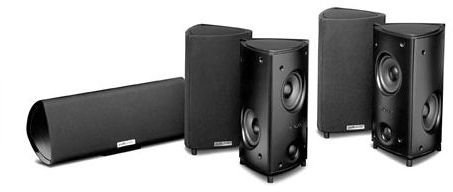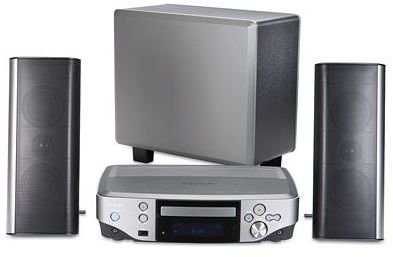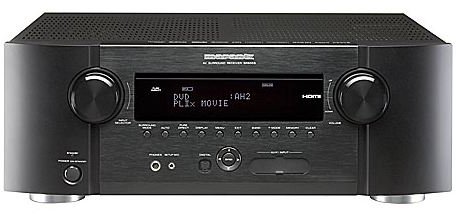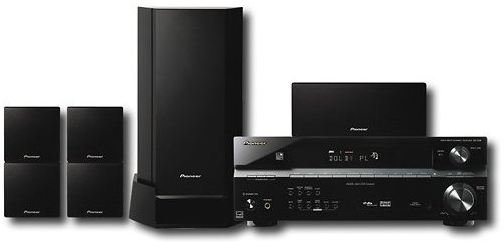Do I Need a New Sound System? Why You Should Get a New Home Theater Sound System
Get Off The Couch Already
Procrastination is rapidly becoming a couch potato sport, so it’s no surprise to hear that many Americans “make do” with their sound systems, rather than upgrading them for more features. The problem is you reach a point where “making do” isn’t good enough. It’s time to bite the bullet and go from 8-track to the digital world. Since you’re not going to do it without a fight, let’s look at the reasons why getting a new sound system is a good idea.
New Ways to Listen
There are three ways to listen at home that have seen significant improvements in audio. The first is HDTV - high-definition video which also offers surround sound.The second comes in the DVD format - now 10+ years old and counting but still viable. DVD brought surround sound with it from the start. The idea of having the same kind of audio ambience and effects as were found in the cinema used to be a heady fantasy but it is now very much a reality. The last format is Blu-ray, building on DVD’s surround audio and adding additional sound channels (as well as beefing up the definition of the audio itself through new formats).
All of these show that having a plain stereo system just doesn’t cut it any more. So what are the choices then?
Getting Surround Sound - Full Treatment
The first way to get surround sound at home is to get a full surround system consisting of a front pair of speakers (the stereo ones that you might already have), a center channel for the dialogue and two surround speakers that go at the sides of the listener’s position. A subwoofer is also common here to provide for the deep bass but some folks pass on this, especially apartment dwellers who can’t have the loud noise going on.
These surround systems commonly include an amplifier, sometimes with a DVD player built-in, which takes care of providing power for all the speakers. Of course you can just buy the speakers needed, but then the amplifier you have can’t just be stereo - it must be able to provide for 5.1 sound or greater.

Surround systems which include the amplifier are more costly than just buying speakers of course, but the advantage here is that you get an entire system all ready to go, plus all the speakers are matched to one another for a good sound. The disadvantage is space - you have to have the room to run the wires and place the surround speakers on stands or on the walls in position.
Getting Surround Sound - Psycho-acoustic Treatment

The alternative to getting a full surround system is one that “tricks” the ear into hearing surround sound. This is done by creating a “virtual” surround effect using just a pair of speakers or three - of course there has to be an amplifier attached as part of the package since it has the audio technology for fooling the ear. The advantage of this type of system is that it costs less since there aren’t all those speakers to get, plus it takes up very little room. It is a self-contained system, so there’s no value in getting this and thinking that you’ll be able to use your existing speakers with it.
Getting Surround Sound - Single Speaker System

Another point to consider is the single speaker solution. This is called a Soundbar and actually has a number of speakers inside of it. From the simple point of view, the speakers provide a stereo plus effect, aided by a built-in amplifier and usually “virtual” surround. Some speakers go even further by using a large number of speakers so that they can “bounce” the sound off of the walls and actually create the real effect of surround coming from the sides of the listener. This type of Soundbar is more expensive of course, but does continue to be fairly compact and easy to use.
Amplification

Those who want to continue to keep their existing stereo speakers but get surround sound will need to get a new amplifier - surround sound can not be upgraded but must be built-in to the amplifier. Today’s amplifier’s provide for surround sound as well as a host of other audio technologies (like greater audio channels for 6.1 or 7.1 sound) and the prices go all over the place - although lower costing models now are more likely to be of quality than was the case before. An amplifier is the most single costly expenditure of a new sound system, and so requires a lot of thought beforehand. Getting speakers to use with it is less of an issue as you don’t have to get speakers from the same company as the one who makes the amplifier.
The Bottom Line
Deciding whether you need a new sound system depends on a number of things - such as how much room you have for the sound system and how much money you have to spend. There’s no denying that your home theater experience will benefit from getting a new sound system, you can’t have an epic home theater set up without surround sound, but ultimately it’s up to you. So get off that couch and decide already!
